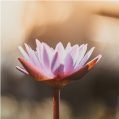Breathing Techniques (Pranayama)

Pranayama is a fundamental aspect of yoga that focuses on breath control and regulation. The term "pranayama" is derived from the Sanskrit words "prana" (life force or energy) and "ayama" (expansion or extension), and it encompasses various techniques aimed at harnessing and directing the flow of vital energy within the body. Here are some key aspects of pranayama:
Breath Awareness
Pranayama begins with developing awareness of the natural breath. This involves observing the inhalation and exhalation without attempting to alter it initially.
Conscious Breathing
Pranayama techniques involve conscious manipulation of the breath, including regulating the duration, pace, and depth of inhalations and exhalations.
Balancing Energy
Pranayama aims to balance the flow of prana within the body. By controlling the breath, practitioners seek to harmonize the body's energy, promoting physical and mental well-being.
Nadi Shodhana (Alternate Nostril Breathing)
This is a widely practiced pranayama technique that involves alternating the flow of breath through the nostrils. It is believed to balance the left (cooling) and right (warming) sides of the body, as well as the ida (moon) and pingala (sun) energy channels.
Ujjayi Breath
Ujjayi is a breathing technique characterized by a gentle constriction of the throat, creating a subtle oceanic sound during both inhalation and exhalation. It helps to regulate the breath and generate internal heat.
Kapalabhati (Skull-Shining Breath)
Kapalabhati is a cleansing pranayama technique that involves forceful exhalations followed by passive inhalations. It is believed to clear the nasal passages and purify the body.
Bhramari (Bee Breath)
Bhramari involves producing a humming sound during exhalation, which is said to have a calming effect on the nervous system and promote inner peace.
Sheetali (Cooling Breath)
Sheetali involves inhaling through a rolled tongue or pursed lips to cool the body. It is especially beneficial for reducing heat and acidity in the system.
Anulom Vilom (Nadi Shuddhi)
Anulom Vilom is a rhythmic alternate nostril breathing technique that balances the nadis (energy channels) and calms the mind.
Retention (Kumbhaka)
This involves the intentional holding of the breath after inhalation (antara kumbhaka) or after exhalation (bahya kumbhaka), which can have various effects on the body and mind.
Dirgha (Three-Part Breath)
Dirgha focuses on deep, diaphragmatic breathing to promote relaxation and expansion of the lungs.
Sitali (Cooling Breath)
Similar to Sheetali, Sitali involves inhaling through a rolled tongue, but it can be practiced if rolling the tongue is not possible.
Pranayama practices should be learned under the guidance of an experienced teacher, especially for beginners. It's important to practice pranayama with awareness, respect for your body's limits, and without force. Regular pranayama practice can help reduce stress, improve lung function, enhance mental clarity, and promote overall well-being.





